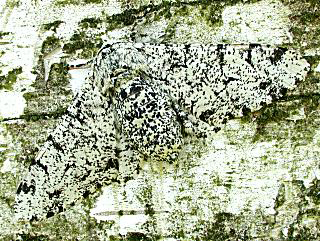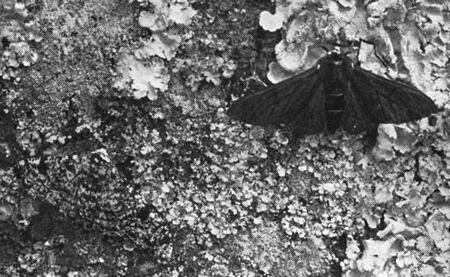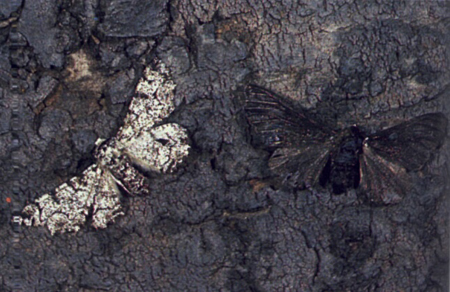
Peppered moth (Biston betularia) on a birch tree.
The evolution of the peppered moth over the last two hundred years has been studied in detail. Originally, the vast majority of peppered moths had light coloration, which effectively camouflaged them against the light-colored trees and lichens which they rested upon. However, due to widespread pollution during the Industrial Revolution in England, many of the lichens died out, and the trees which peppered moths rested on became blackened by soot, causing most of the light-colored moths, or typica, to die off due to predation. At the same time, the dark-colored, or melanic, moths, carbonaria, flourished because of their ability to hide on the darkened trees.
Since then, with improved environmental standards, light-colored peppered moths have again become common, but the dramatic change in the peppered moth’s population has remained a subject of much interest and study, and has led to the coining of the term “industrial melanism” to refer to the genetic darkening of species in response to pollutants.
Melanism is the opposite of albinism and occurs naturally with about the same frequency. The genetic basis is not clearly understood, but inbreeding is considered partially responsible.
In the photos below, a pale form (typica) and a dark form (carbonaria) rest side-by-side on an unpolluted lichen covered trunk in Dorset (above), and a soot-covered trunk near Birmingham. (From HBD Kettlewell, 1956, Heredity 10: 300).

